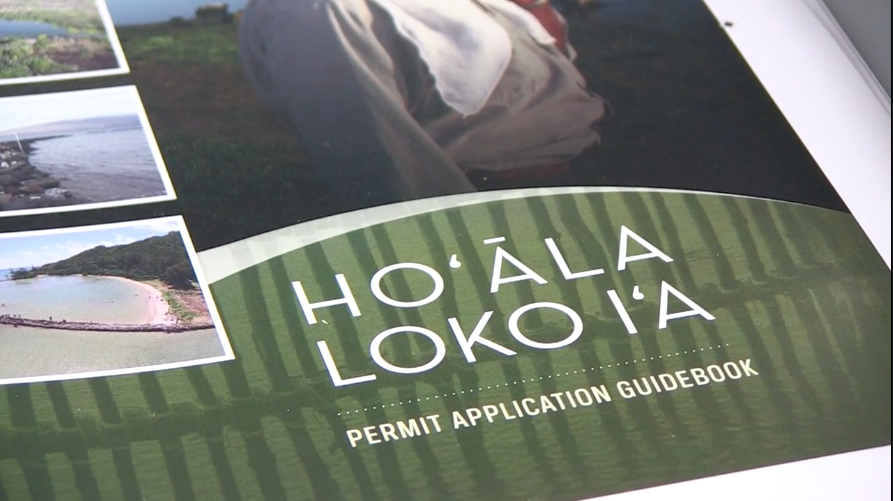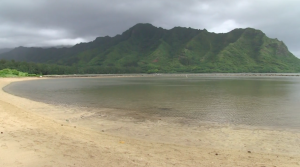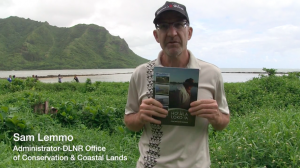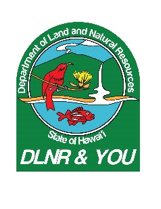DLNR & YOU – Guiding Restoration Of Hawaiian Fishponds
Posted on Aug 30, 2016 in News Releases, sliderDEPARTMENT OF LAND AND NATURAL RESOURCES
News Release
| DAVID Y. IGE GOVERNOR |
SUZANNE D. CASE
CHAIRPERSON |
For Immediate News Release August 30, 2016
 (click on image to watch video)
(click on image to watch video)
DLNR & YOU – GUIDING RESTORATION OF HAWAIIAN FISHPONDS
Loko i‘a essential to ‘ahupua‘a health, food security,
community resilience and ecosystem services
(Honolulu) – Loko i‘a, or traditional Hawaiian fishponds, are unique aquaculture systems that existed throughout ancient Hawai‘i. Although a 1990 statewide survey identified 488 loko i‘a sites, many were in degraded condition, and either completely beyond repair or unrecognizable.
 However, there is hope, as communities and stewardship groups continue to actively restore or have expressed interest in reviving the integrity and productivity of fishpond locations still in existence.
However, there is hope, as communities and stewardship groups continue to actively restore or have expressed interest in reviving the integrity and productivity of fishpond locations still in existence.
Suzanne Case, Department of Land and Natural Resources Chair says, “In 2012, a dedicated group of individuals and organizations came together to overcome difficulties in obtaining approvals from multiple agencies, to maintain and restore Hawaiian fishponds.”
Fishpond practitioners formed Hui Malama Loko I‘a to empower one another and leverage their skills, knowledge and resources, while working to feed and connect communities around the islands. This network currently includes over 38 fishponds and complexes, with over 100 fishpond owners, workers, supporters and stakeholders.
Case adds, “Now the DLNR Office of Conservation and Coastal Lands is releasing a new guidebook on fishpond restoration in time for the IUCN World Conservation Congress 2016. This guidebook marks the beginning of what we hope will be a new day in Hawaiian fishpond revitalization,” she said.
The newly published, high-quality, full-color “Ho‘ala Loko I‘a Permit Application Guidebook” is intended to help cultural practitioners, landowners and community groups navigate a new streamlined application process for Hawaiian fishpond revitalization.
Historically, fishponds have been subject to an extensive permitting process that requires large amounts of resources and time to secure. So in 2015 the State of Hawai‘i completed streamlining the permitting process for the repair, restoration, maintenance and operation of traditional Hawaiian fishponds in Hawai‘i.
The DLNR Office of Conservation and Coastal Lands (OCCL) and collaborators have developed a master permit for traditional Hawaiian fishponds that encompasses the main permits currently required. This master permitting process and program is called “Ho‘ala Loko I‘a.” The program was designed to be in compliance with as many federal and state regulations as possible to make the permitting process easier for fishpond practitioners to navigate.
Practitioners can now use a simplified conservation district use permit to apply for permits under this programmatic permit.
A programmatic environmental assessment (EA) was also completed to comply with the Hawai’i Environmental Quality Act (HEPA). The CDUP and programmatic EA were designed to cover all existing traditional fishponds in the State.
Another helpful step was the signing of Bill 230 by Governor Ige in July 2015, which waived the need to obtain a Department of Health 401 Water Quality Certification for fishpond restoration. This waiver is only available to projects that obtain permits through the OCCL program. While the program vastly reduces government red tape, projects are still required to have water quality monitoring, mitigation and best management practices in place to keep Hawaii’s waters clean and reefs healthy.
The Ho‘ala Loko I‘a Permit Application Guidebook further provides clear guidance on how to meet State water quality standards. 
Although this streamlined permitting program covers many of the authorizations for restoring a loko i‘a, in some cases, additional permits or authorizations may still be required, such as:
– A right of entry agreement from DLNR land division for a state-owned pond
– A stream channel alteration permit from the Commission on Water Resource Management)
– A special management area county permit for work mauka of the shoreline
Applications submitted to OCCL are reviewed and subject to best management practices and monitoring standards that help to protect Hawaii’s environmental and cultural resources while supporting the need for communities and practitioners to care for loko i‘a.
# # #
Media Contact:
Dan Dennison
Senior Communications Manager
(808) 587-0407
[email protected]

